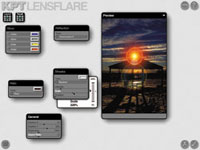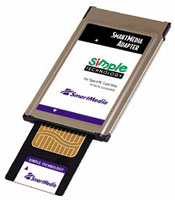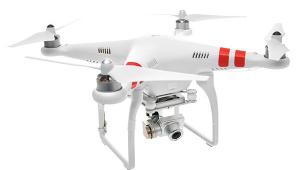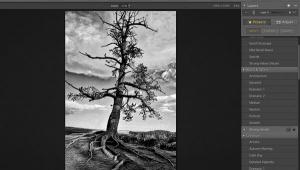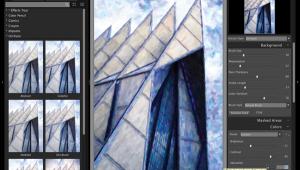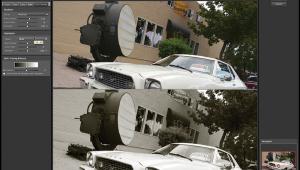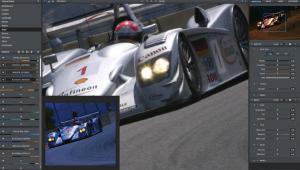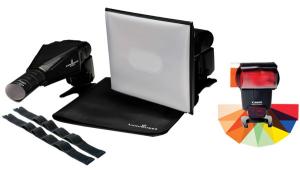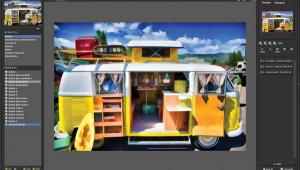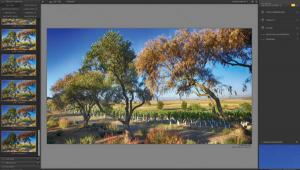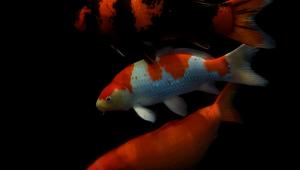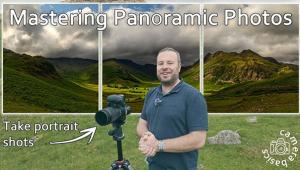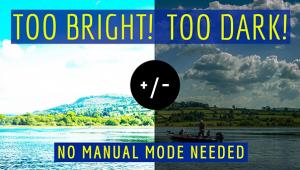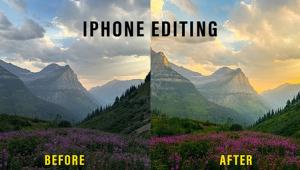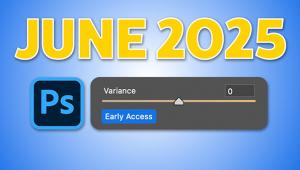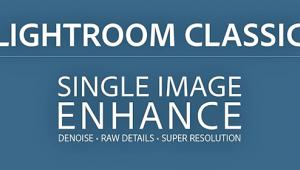Digital Innovations
A Few Digital Rules Of Thumb
"640K ought to be enough for anybody," Bill Gates, 1981 I'm often asked by readers about the specifications for the "ideal digital imaging computer." In the past, I've glibly rattled off a few rules of thumb of how fast a processor, how large a hard disk, and how much memory would provide the kind of perform-ance a pixographer would be comfortable with. Not anymore. These days, things change much too quickly in the field of computer hardware and even digital imaging software. I remember back in the Jurassic computer era when I was installing a 120MB hard disk in my Macintosh IIci. When I told a friend about it, he asked, "What are you going to do with all of that space?" It seems like it wasn't that much later that I was creating 120MB files for one of my books and Imation was selling an inexpensive removable media drive that held 120MB on a single floppy-like disk. The pace of software changes is just as fast, maybe even more so. I had no sooner selected Kai's Power Tools 5 for inclusion on my best plug-ins of 1999 list for the December issue, when MetaCreations introduced KPT 6! Overtime I've discovered that any rules of thumb that I give are quickly outdated, but I'm willing to stick my neck out by giving you some tips that will help when buying or upgrading a new computer. Always buy the most powerful computer system that you can afford. Since everyone's budgets are different, this approach should result in a different machine for different kinds of users, but should keep you from going broke before discovering that bird watching has more appeal than digital imaging. By "powerful," I'm referring to the major components of a computer that have an impact on how easy it will be for you to work with digital images: · The CPU (Central Processing Unit) chip is the heart of your computer and its speed of operation or clock speed is measured in thousands of cycles per second or MegaHertz (MHz). You can think of it as a horsepower rating for the chip. The higher the clock speed, the faster the CPU can process data. Faster processors mean less waiting time while applying a filter or manipulating a photograph using image-editing programs such as Adobe Photoshop. · A computer's hard drive consists of one or more rigid non-flexible disks. It has a read/write head much like a phonograph used to or uses multiple heads with multi-disk drives. You can access this data whenever you want, and it's still there after you shut the computer down. Fortunately, the price of higher capacity drives has dropped as fast as the digital imager's need for greater capacities has grown. · Random Access Memory (RAM) is that part of your computer that temporarily stores data while you're working. Unlike a hard drive this data is volatile--if you lose power or turn off your computer, the information disappears forever. The software that runs the computer and enables you to do digital imaging requires a certain minimum amount of memory. If you don't have enough, the computer displays an error message. Contrary to Bill Gates' statement at the beginning of this month's column, more memory is better than less. Mac OS X, for example, requires 64MB of RAM, and Windows 2000 and the semi-secret Windows Millennium (more on Millennium next month) operating systems will probably require something similar. You should get as much RAM as you can afford and twice as much as you think you need. While RAM prices are higher today than their record lows, they are still a bargain. When working with digital images, you'll find that your computer needs many more capabilities than those of the average user who just wants to surf the Internet or write a letter to Granny. As a point of reference, take some time to look at the lowest priced computers available and make note of their capacities in these three critical areas. If you can afford it, make sure the specifications for the computer you choose exceeds these levels. How much more depend on your budget. Working with a slower, lower capacity machine does not mean you won't be able to work with digital images, but, as the traffic reporters say, "expect some delays." |
|||
Plug-In Of The Month. I rated MetaCreations Kai's Power Tools 5 as one of the best plug-ins of 1999. Now the company is back with a new KPT that earns this month's honor with one of the most useful and practical package of plugs that have ever worn that name. Fans of the previous version shouldn't worry that the interface design is different. The interface for the filters in KPT 6 resembles KPT 5's innovative design featuring tools that look like tools and menus that appear when you need them. The biggest difference is what's included in the package so that KPT 6 could actually be considered a supplement, not necessarily a replacement for KPT 5. Like the previous version, KPT 6 is a suite of plug-ins that includes the following filters and tools: KPT Goo is a plug-in version of MetaCreations' family of Goo software. KPT Goo lets you create images that can be smeared, smudged, twirled, or pitched as though reflecting an image from a circus mirror. KPT Lens Flare is more impressive than Photoshop's own flare tool and its capabilities approach those of previous "Plug-in of the Month" Knoll Lens Flare Pro. You can create realistic glows, halos, and lens reflections that simulate real world conditions. The interface controls in KPT Materializer let you create surface textures and you can even wrap an image around the contours of a texture. While many plug-ins including Photoshop's own Motion Blur command let you add streaks, KPT Turbulence "kicks it up a notch" by creating wave distortions and ripples that have a realistic fluid look. Like several of the plug-ins found in KPT 6, you can output images one at a time or as an animation sequence. While not a sharpening plug-in in the traditional sense, KPT Equalizer lets you correct blurred images by sharpening pixels within a specific frequency, and can also be used to add selective smoothing and blurring effects. KPT Reaction is a filter that defies easy description, but the best way of thinking about it may be as a tool that lets you add three-dimensional organic textures to an image's surface. You can think of KPT Gel as a subset of the Reaction tools because it allows you to add gel-like blobs (creative blobs, if you prefer) to the surface of a photograph. Working with this plug-in is almost as much fun as using Goo. KPT Projector has a high fun quotient too but offers many practical applications as well. In addition to letting you create an infinite number of tiling effects, KPT Projector lets you add warp distortion or 3D transformations to any flat image. KPT 6 includes two plug-ins that eschew the soft, organic interface of KPT 5 and adopts one resembling the cockpit of an F-16 fighter aircraft. KPT SkyEffects lets you create effects far removed from Photoshop's simple Clouds command. In fact, the controls have many of the features found in early versions of MetaCreations' own Bryce program. Similarly, KPT SceneBuilder, which grabs more memory than any of the other plug-ins in the package, lets you create realistic scenes by manipulating transparency, reflection, refraction, and texture properties. If you've been thinking about purchasing Bryce, SceneBuilder gives you a taste of its capabilities. Working with plug-ins involves experimentation. I always keep a group of modest sized JPEG files on my hard disk, so they load fast and effects don't take much time to apply. Nevertheless, some filters, like KPT Reaction take longer than others, such as KPT LensFlare, which previews effects almost instantaneously. Working with--playing really--with these files is the only way to learn what they can do, although MetaCreations helps by providing the best manual in the KPT series, visit www.metacreations.com. |
|||
Plug Into The Web. Ulead, which has one of the best optimizers for the web built-into its PhotoImpact 5 program, announced the availability of its GIF-X 2.0 plug-in. Ulead GIF-X is a Photoshop compatible plug-in that's designed to create still and animated special effects that would normally take lots of time and effort to produce. The plug-in can be used to add motion and lighting effects to images and gives users the ability to create GIF animations from directly within Adobe Photoshop or any other compatible image editors. GIF-X 2.0 offers 10 light effects, such as lightning, fireworks, lens flare, halo, spotlight, meteor, comet, and laser. These effects are customizable and include key frame control for creating animations that can be used on any web page or presentation. You can apply the fireworks effect to an image, then add laser effects, and finally output a GIF animation using the combined effects. GIF-X 2.0 comes with a special effects gallery of animated thumbnail images, and you can add your own custom settings to the Gallery for use later on. The plug-in is available as a downloadable product from the Ulead Online Mall (www.ulead.com) and sells for $39.95. From MacWorld Expo 2000. The big news at the show was that interim-CEO Steve Jobs announced he was no longer interim, he was the "iCEO." While I've often criticized Jobs, I think he deserves the credit for bringing Apple Computer back from the dead. The brilliant iMac and colorful, powerful G3/G4 computers have affected all areas of design, not just in the colorful peripherals they've inspired but in other areas as well. Everything from cell phones to Kenmore vacuum cleaners have the iMac touch and Ford Motor Company announced a series of three concept cars called 24.7 that were described by Autoweek magazine as having "Apple iMac style." Mac OS X is a new implementation of the Macintosh OS and includes aspects of the former NeXT operating system that brought Jobs back to Apple. It has an entirely new user interface called "Aqua" which features the "Dock" as a way to organize everything from applications and documents to web sites. The old NeXT interface had a dock, but OS X's implementation appears more contemporary and easy to use. Aqua features a completely new Finder--the way Mac heads interface with their computers--which simplifies the storing, organizing, and retrieving of files and unifies these functions across local area networks and the Internet. There is more than just a new interface here. At the core of Mac OS X is Darwin, Apple's advanced operating system kernel. Darwin offers Mac users true memory protection for higher reliability, preemptive multitasking for smoother operation among multiple applications, and Internet-standard networking. To take advantage of Mac OS X's new features, software developers must "tune-up" their applications. At MacWorld, Apple announced that more than 100 leading developers have pledged support for the new operating system, including Adobe, Agfa, Connectix, id, Macromedia, Metrowerks, Microsoft, Palm Computing, Quark, SPSS, and Wolfram. Mac OS X should be available sometime this summer. For more information, visit www.apple.com. |
|||
Digital Film. Removable media is an important tool for digital photographers. While serving the same function as film, it has no inherent characteristics of its own, and is merely a storage medium. Because you insert these storage devices into cameras to record images many people have taken to calling the media "digital film" and I think it's a term that fits. One way these devices are different from "real" film is that they can be easy to lose. Recently I got an e-mail from a photojournalist friend of mine who had shot an assignment using a Nikon D1 digital camera. When he got back to the office, he inserted a CompactFlash into a card reader and found there were no images on it! He had to go back to the shoot site to look for the small black and white CompactFlash card. Unlike film that comes in nice, round brightly colored canisters, CompactFlash and the Wheat Thin-like SmartMedia are small, dull colored, and flat, and as my friend found out easy to lose. Some SmartMedia cards are sold in small soft plastic holders and I keep them inside their packs until I need to use them. I also use the old press photographer's trick of keeping digital film media that's exposed in a right vest or jacket pocket, and the available in the left side because they are "left to be shot." It would help if a manufacturer came up with CompactFlash or SmartMedia cards in colors. If they can do it with floppy and Zip disks, why not digital film? As I write this there are three major forms of digital film: PC Cards, CompactFlash, and Smart-Media. According to International Data Corporation, SmartMedia and Compact-Flash accounted for 90 percent of all card shipments during 1999. With more than 36 cameras specifying SmartMedia, digital cameras are the most popular application. Iomega's Clik! drive is a relative newcomer as is Sony's Memory Stick. At the Consumer Electronics Show, Lexar Media announced an agreement with Sony to develop a high-speed Memory Stick. Lexar will license its high-speed flash memory controller technology to Sony, allowing them to improve the read/write speed of the Memory Stick. The agreement allows Lexar to license Memory Stick specifications from Sony and manufacture and market media. Memory Sticks work in a wide variety of devices including digital cameras. The new high-speed Memory Stick will be backward compatible with current Memory Stick products and is slated for introduction in 2001. For information about Lexar digital film products, call (800) 789-9418 or visit their web site at: www.digitalfilm.com. Other than Ilford's experiment with 72 exposure film some years ago, most photographers seem content with a 36 exposure cassette, but digital imagers always want more. Larger capacity digital film media not only lets pixographers store more images, but--and I think more importantly--bigger image files. Simple Technology recently announced that it is the first company to market 64MB SmartMedia cards which provide the equivalent of 32 additional pictures in a 2Mp digital camera. Estimated street pricing for Simple Technology's 64MB SmartMedia card is $159. The company is a member of the SSFDC (Solid-State Floppy Disk Card) Forum, the standardizing organization of Smart-Media, and supports its cards with a one-year warranty and unlimited toll free technical support. In addition to 64MB SmartMedia, the company offers 32MB, 16MB, 8MB, and 4MB capacities as well as a PC Card adapter. Simple Technology also offers a complete line of flash card products including CompactFlash up to 128MB. More information on their products can be found at: www.simpletech.com.
|

